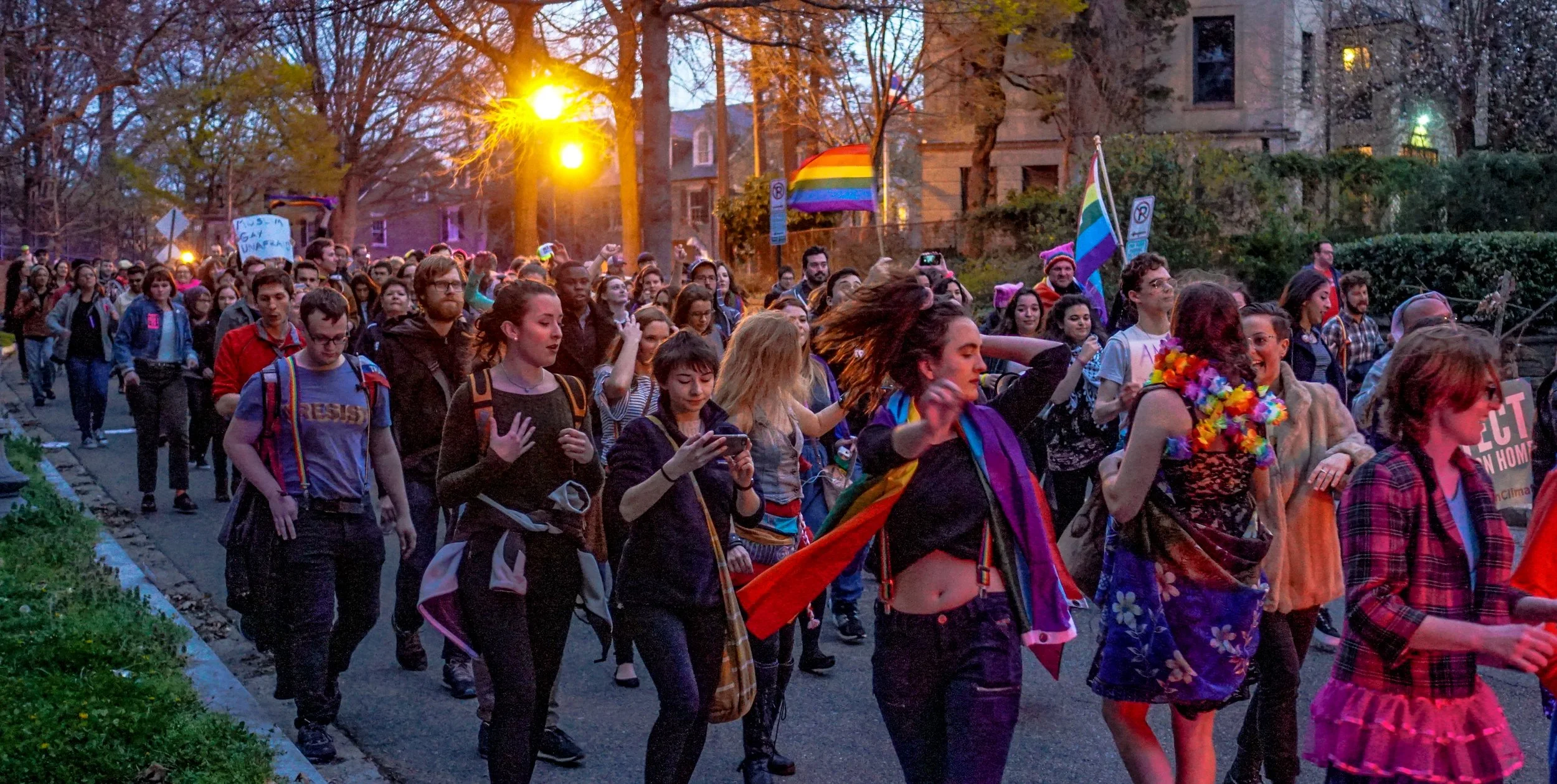How Are Queer Folx Affected by the Life Course Perspective?
The life course perspective is an interesting way to think about queer intergenerationality…
Queer folx build community and create linked lives around shared experiences such as eating and sharing meals. Food, in this sense, is not only a biological necessity but also a deeply rhetorical and symbolic practice: it structures how people gather, how they perform belonging, and how they resist marginalization. For queer communities—often denied access to “legible” family formations—food sharing becomes a mechanism for world-building, kinship-making, and survival. To theorize this phenomenon, the life course perspective provides a useful lens, particularly its emphasis on timing, linked lives, and cohort effects (Elder, Johnson, & Crosnoe, 2003). Three hypotheses emerge from this intersection, each addressing how queer folx forge community around food while negotiating cultural and historical contexts.
H1: Timing and Cultural Context
The first hypothesis considers how the timing of life course transitions shapes queer community-building around food. The principle of timing—that the impact of events depends on when they occur in a person’s life and in historical context—offers a way to examine how food-centered queer communities form under varying cultural conditions. Research in LGBTQ studies has long emphasized generational shifts in acceptance and visibility (Dewaele, 2011). For example, older queer individuals who came of age before same-sex marriage recognition often relied on informal potlucks, bars, or underground dinners to create chosen families, while younger cohorts may form bonds in more public and digitally mediated ways (see Weston, Families We Choose). Timing intersects with cultural context: race, class, nationality, and religion affect whether a shared meal signifies safety, risk, or resistance. Chatters et al. (2020) stress that life course transitions must be understood as culturally situated—an insight that underscores how queer food practices vary across diasporic, racialized, or immigrant communities. Thus, H1 proposes that the timing of life-course transitions related to food-based queer community formation is contingent on broader cultural climates and generational positions.
H2: Interdependence, Friendship, and Linked Lives
The second hypothesis centers on the principle of linked lives, emphasizing interdependence and friendship as mechanisms of queer identity formation. Queer friendships often substitute for or supplement kinship structures excluded by heteronormative frameworks (Weeks, Heaphy, & Donovan, 2001). Food-sharing rituals—potlucks, dinner parties, cookouts—become a material enactment of these linked lives, binding individuals into networks of mutual care. Yet, this interdependence does not occur in a vacuum. As Ahmed (2006) and Cohen (1997) remind us, queer bonds are mediated by social constraints: racism, classism, and ableism shape who gets included, who feels safe, and whose food traditions are centered. Friendships and food practices thus function both as survival strategies and as terrains where social hierarchies are reproduced or contested. H2 posits that food-sharing as a queer communal practice exemplifies linked lives, but the quality, strength, and inclusivity of these ties remain contingent on broader social structures.
H3: Cohort and Intergenerational Relationships
The third hypothesis turns to the principle of cohort, suggesting that different generations of queer folx experience food-based community-building in distinct ways. Generational shifts in cultural acceptance—documented by Dewaele and others—mean that older queer cohorts may associate shared meals with clandestine solidarity, while younger cohorts may frame them as extensions of identity-affirming public life. Weston’s (1991) ethnographic work on chosen families highlights how the AIDS crisis, for instance, made food-sharing both a caregiving practice and a ritual of mourning. Contemporary queer youth, in contrast, often combine food-centered practices with online organizing, making intergenerational exchanges more fragmented yet still possible. Meals thus become a site where age and cohort effects can be disentangled, allowing scholars to study how queer kinship evolves across time. H3 posits that sharing meals functions as a bridge across generational divides, illuminating how cohort-based differences in queer experience shape intergenerational solidarity—or tension—within queer communities.
Toward a Theory of Queer Food-Based Community
Together, these three hypotheses sketch a theory of queer food-based community that integrates the life course perspective with queer studies. Food practices—mundane as they may appear—become crucial sites where timing, interdependence, and cohort effects intersect. They provide spaces where linked lives are forged and sustained, even in the face of marginalization. Moreover, they highlight how community formation is never static: it shifts with cultural climates, generational positions, and social constraints. Scholars like Sara Ahmed, Kath Weston, Cathy Cohen, and Pierre Bourdieu (on habitus and taste) all provide critical scaffolding for analyzing how food mediates identity, belonging, and resistance in queer contexts. Future research might extend these hypotheses through ethnographic study of queer potlucks, intergenerational interviews, or cross-cultural comparisons—methodologies well suited to capturing the dynamic and embodied nature of food-based community-making.

